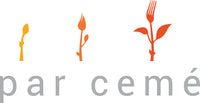
Il est convenu de situer l’origine du citron dans les contreforts du Cachemire. Il aurait ensuite gagné la Chine voici environ trois mille ans puis sera ensuite acclimaté en Mésopotamie où, durant la captivité de Babylone, les Hébreux apprirent sans doute à le cultiver. Ils appréciaient tellement ce fruit qu’ils le firent figurer dans certaines cérémonies, comme celles du Jour du Tabernacle. Les Grecs anciens ne semblent pas l’avoir beaucoup cultivé, même s’ils l’utilisaient dans les festivités des noces. Les Arabes favoriseront l’expansion du citron dans tout le bassin méditerranéen, dès le 10e siècle, et notamment en Espagne, sa terre d’élection. Enfin, à la fin du XVe siècle, Espagnols et Portugais implantèrent le citronnier en Floride... où il prospère toujours! Comme tous les autres agrumes, le citron (Citrus limonum) est un fruit remarquable par sa haute teneur en vitamine C : 52 mg aux 100 g. Protégée par la peau épaisse du fruit, et préservée par le milieu acide dans lequel elle est en solution, la vitamine C est retrouvée à peu près intégralement plusieurs semaines après la récolte du citron. Elle est accompagnée de composés flavonoïdes (vitamine P), qui renforcent l’action physiologique de la vitamine C, et a une action protectrice des capillaires sanguins. Enfin, le citron fournit aussi un large éventail de vitamines du groupe B, ainsi qu’un peu de vitamine E (0,8 mg aux 100 g). À noter que le citron est également nettement moins riche en glucides (sucres) que les autres fruits, puisqu’on n’en trouve que 2,5 g aux 100 g en moyenne (dans la plupart des fruits, l’apport est généralement compris entre 8 et 10 g aux 100 g). On a identifié un très large échantillonnage de substances minérales et d’oligo-éléments dans le citron, qui en fournit environ 0,5 g aux 100 g. Le potassium, très abondant, arrive largement en tête (153 mg aux 100 g). Le potassium, lorsque métabolisé par l’organisme, libère des résidus alcalinisants, et fait donc du citron un aliment basifiant (antiacide), malgré sa saveur qui pourrait laisser croire le contraire. On peut aussi noter aussi des apports intéressants en calcium (25 mg aux 100 g) et en fer (0,5 mg aux 100 g), substances qui sont d’autant mieux assimilées que dans le citron, elles sont accompagnées de vitamine C et d’acides organiques. Bref, ce petit fruit, devenu un incontournable de nos cuisines, offre une énorme quantité de bienfaits pour nos palais et notre santé. On serait fous de s’en priver!
It was agreed to locate the origin of lemon in the foothills of Kashmir. It would then have reached China about three thousand years ago, and then would be acclimatized to Mesopotamia where, during the Babylonian captivity, the Hebrews learned to cultivate it. They liked it so much that they made it appear in certain ceremonies, like those of the Day of the Tabernacle. The ancient Greeks do not seem to have cultivated it much, even if they used it in the wedding festivities.The Arabs will favor the expansion of lemon throughout the Mediterranean basin, from the 10th century, and especially in Spain, its new homeland. Finally, at the end of the 15th century, Spaniards and Portuguese settled the lemon tree in Florida ... where it is still thriving!Like all other citrus fruits, lemon (Citrus limonum) is a remarkable fruit because of its high content of Vitamin C: 52 mg per 100 g. Protected by the thick skin of the fruit, and preserved by the acid medium in which it is in solution, vitamin C is found almost entirely several weeks after the lemon harvest. It is accompanied by flavonoid compounds (vitamin P), which enhance the physiological action of vitamin C, and has a protective action of blood capillaries. Finally, lemon also provides a wide range of B vitamins, as well as some vitamin E (0.8 mg per 100 g).Note that lemon has also significantly less carbohydrate (sugars) than other fruits, as only 2.5 g per 100 g is found on average (in most fruits, the intake is generally included Between 8 and 10 g per 100 g).A very large sampling of minerals and trace elements was identified in lemon, which yielded about 0.5 g per 100 g. Potassium, very abundant, comes largely in the lead (153 mg per 100 g). Potassium, when metabolized by the body, releases alkalizing residues, making lemon a basifying (antacid) food, despite its flavor that might suggest the opposite. Interesting input in the amounts of calcium (25 mg per 100 g) and iron (0.5 mg per 100 g), which are better assimilated in lemon, due to the presence of vitamin C and Of organic acids.In short, this little fruit, which has become a must in our kitchens, offers an enormous amount of benefits for our palates and our health. We would be crazy to deprive ourselves of it!

